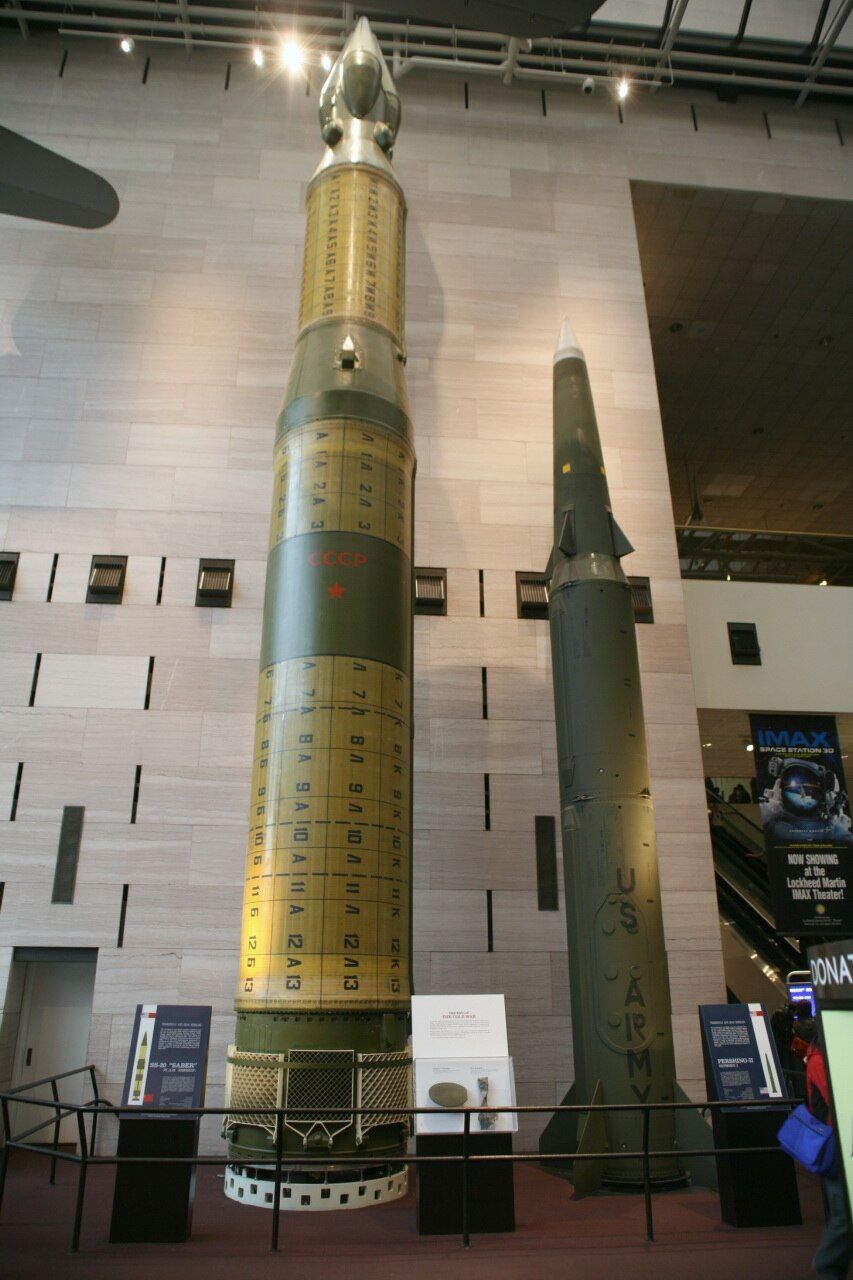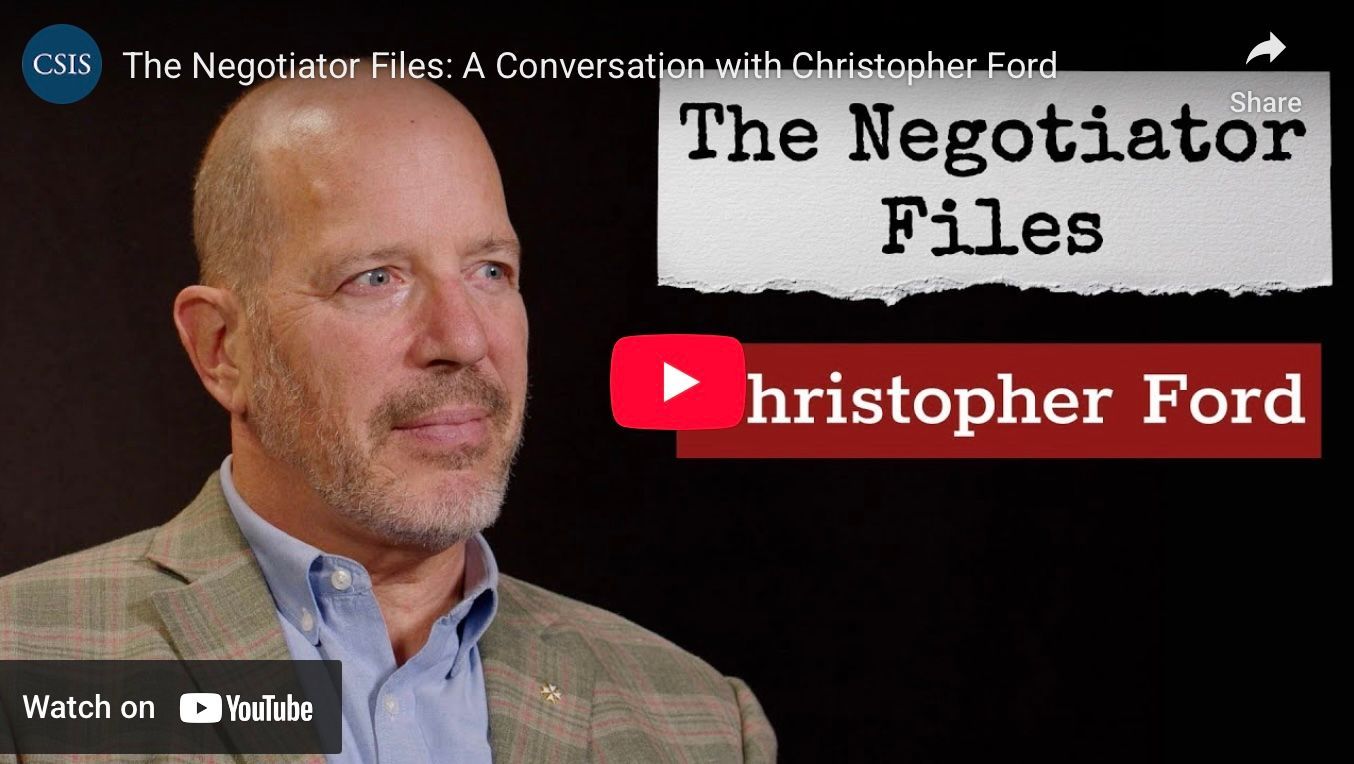Achieving and Sustaining Nuclear Weapons Elimination
Note:
This paper was written by Dr. Christopher A. Ford when serving as United States Special Representative for Nuclear Nonproliferation. It delivered at the Conference on "Preparing for 2010: Getting the Process Right" , Annecy, France, March 17, 2007, as part of the U.S. Government's preparation for the 2007 Preparatory Committee meeting for the Nuclear Nonproliferation Treaty.
Nuclear disarmament was an important subject of discussion during the negotiations that produced the Nuclear Nonproliferation Treaty (NPT), and has remained a key topic in debates during subsequent review cycles of the Treaty. Article VI of the Treaty calls for each of the NPT States Party to:
pursue negotiations in good faith on effective measures relating to cessation of the nuclear arms race at an early date and to nuclear disarmament, and on a Treaty on general and complete disarmament under strict and effective international controls.
For the United States, it has long been, and remains, important that the international community achieve the goals outlined by the NPT, including the eventual elimination of nuclear weapons as discussed in the Treaty's Preamble and its Article VI.
However, as States Party to the NPT discuss disarmament issues during the current Treaty review cycle, there are a number of complexities to bear in mind. Only by understanding them can the international community hope to succeed in achieving these goals.
The United States encourages the NPT parties to debate how to create an international environment in which it would become possible to achieve the goals of the Treaty's Preamble and Article VI.
The United States looks forward to discussing these issues as part of a broader debate that addresses the concerns of all NPT States Party on disarmament.
Easing Tension and Strengthening Trust
The Preamble to the NPT notes that the States Party to the Treaty desire:
to further the easing of international tension and the strengthening of trust between States in order to facilitate the cessation of the manufacture of nuclear weapons, the liquidation of all their existing stockpiles, and the elimination from national arsenals of nuclear weapons and the means of their delivery pursuant to a Treaty on general and complete disarmament under strict and effective international control.
This reflects the understanding by the drafters of the Treaty that reducing international tension and strengthening trust between States would be necessary for realizing these goals. This is why Article VI, for instance, addresses itself to all States Party, not merely to the nuclear weapons states. It is incumbent upon all Parties to work to ensure necessary changes in the regional and global security environment. Meanwhile, the United States will continue to seek opportunities to move in the direction indicated by the Preamble and Article VI in a manner consistent with its security and that of its allies. But those who wish to see the final achievement of all the Treaty's goals must understand that making such progress is everyone's responsibility.
Deterrence and Disarmament
Historically, the possession of a nuclear arsenal by the United States - which is not prohibited by the NPT, Article IX.3 of which recognizes the existence of certain "nuclear weapon State[s]" - has been an important factor in the decisions by a number of countries to forgo having their own nuclear weapons programs and in convincing others to abandon nuclear weapons programs that were already underway. (As is evident from the extensive consideration in the NPT's negotiating history of "defense arrangements" such as NATO and the Warsaw Pact, moreover, some non-nuclear weapon states were able to forgo nuclear weapons because they had confidence that they were under the umbrella of the U.S. nuclear deterrent.) Moreover, until achievement of the changes in the regional and global security environment called for in the NPT's Preamble, the U.S. nuclear deterrent will continue to make an important contribution to nuclear nonproliferation.
Significantly, the U.S. deterrent will continue to serve the interests of disarmament by helping prevent regional arms races. Today, for example, the United States is working hard with other countries in the Six-Party Talks to convince North Korea to terminate its nuclear weapons program. (The results of the most recent round of talks provide some reason for encouragement.) At the same time, given the recent nuclear detonation by North Korea, States Party in Asia have made clear the importance of U.S. nuclear deterrent capabilities in helping keep the situation there under control. In the face of North Korea's nuclear provocation, U.S. allies in Asia have placed increased reliance upon recent assurances by Secretary of State Rice that the United States will fulfill its security commitments. These commitments have also helped convince some of these countries to continue their policies of forgoing the development of nuclear weapons for defense.
The alternative to the U.S. extended deterrent might be a grim one: spiraling regional nuclear arms races that would imperil international peace and security and undermine the goals of Article VI of the NPT. Both nonproliferation and disarmament interests, therefore, are today served by the continued maintenance of the U.S. deterrent.
For its part, the United States is committed to reducing its reliance upon nuclear weapons. The United States has been moving toward this goal since the issuance of its Nuclear Posture Review (NPR) in 2001, which directed movement away from the traditional Cold War-era nuclear "Triad" of nuclear strike systems to a "New Strategic Triad."
Today, the United States no longer relies exclusively upon nuclear weapons for strategic deterrence, instead depending upon both nuclear and non -nuclear offensive strike systems, active and passive defenses (including ballistic missile defenses), and a revitalized and reshaped defense industrial infrastructure that will provide the ability to respond promptly to emerging threats, deter aggression, and defeat aggressors should deterrence fail.
The United States is no less committed to deterrence than before -- including extended deterrence -- because of the contributions such deterrence makes to international peace and security. But by moving to the New Triad, the United States is reducing its reliance upon nuclear weapons; it urges all other NPT nuclear weapons states (NWS) to do the same.
Until the countries of the world have finally achieved the goals envisioned in the Preamble and Article VI of the Treaty, the U.S. extended deterrent can actually help prevent proliferation and the emergence of new nuclear arms races. In this respect, the U.S. extended deterrent helps, under current conditions, to lay the foundation for further progress on disarmament. Ultimately, as the Preamble makes clear, it must be the objective of all NPT Parties to ease international tensions and strengthen trust so that we need to rely less and less upon nuclear weapons, and ultimately to create new conditions in which it is no longer necessary for any state to rely upon nuclear weapons at all.
Making "Zero" Achievable and Sustainable
What, then, would the global security environment look like in which it would be possible and realistic to achieve -- and, significantly, to maintain over time - the goal of a world free of nuclear weapons?
- First, as noted above, the NPT's Preamble makes clear that the nations of the world must make further progress in easing tensions and building trust in order to help create the conditions for a world in which elimination of nuclear weapons, rather than their continued possession, constitutes the path of wisdom and prudence. Such progress would make it possible for all nations to transcend the competitive military dynamics and concerns that have helped encourage reliance upon nuclear weapons to date.
- Second, there must be confidence that all states will faithfully adhere to nuclear nonproliferation commitments such as those of the NPT. Without assurances that countries currently lacking nuclear weapons will not develop them, it would be difficult to imagine all nuclear weapons-possessors eliminating their stockpiles. Nonproliferation compliance is thus a critical step toward the goals of Article VI and the Preamble.
- Third, there must be confidence that countries and individuals that engage in or provide support to illicit weapons of mass destruction (WMD) programs are fully and finally out of the proliferation business. An important step toward achieving such confidence would be firmer controls on ending the spread of enrichment and reprocessing technology, and assurances that no state will allow its territory to provide safe haven for the trafficking of WMD and related materials.
- Fourth, the pursuit of other weapons of mass destruction and their delivery systems must be halted, and existing programs of this type terminated. The pursuit of biological and chemical weapons by countries such as Iran or North Korea is clearly inconsistent with creating and maintaining the sort of security environment in which total elimination of nuclear weapons would be possible.
- Fifth, there would need to be ways in which any deterrent requirements that might remain after nuclear disarmament could be met in a non-nuclear (and "non-WMD") fashion, if indeed such disarmament were to be contemplated prior to achievement of a treaty on general and complete disarmament.
- Sixth, there would need to be assurances against development or reconstitution of nuclear weapons capabilities ( i.e. , "breakout" from a disarmament regime) or of other WMD, as well as means to enforce those assurances. Because fissile material and nuclear technology will remain in the world -- and because knowledge of the basic physics of nuclear weaponry cannot be eradicated -- it would be necessary to ensure that any attempt to develop or reconstitute nuclear weapons, or other WMD, could be detected promptly and met by a robust non-nuclear response. It would also need to be clear that a violator would not be able to realize the intended strategic benefits of its violation, and this might involve many elements ( e.g. , the potential availability to others of countervailing reconstitution, or the widespread deployment of ballistic missile and other defenses that would help deny or delay a violator's capability to deliver a nuclear weapon). The principle of "irreversibility" in nuclear disarmament, therefore, should not be understood and approached as solely a technical matter, for this would be impossible to achieve. Instead, irreversibility should be seen as a requirement that strategic dynamics be set in place that will ensure the maintenance over time of a balance of costs and benefits such that would-be violators understand that potential development or reconstitution of nuclear weapons would be unprofitable and would make them less (not more) secure.
This list is necessarily speculative and incomplete. It is doubtless at least as hard to predict in detail the conditions under which future leaders would find it possible to eliminate nuclear weapons as it would have been for policymakers at the height of the Cold War to predict exactly how the superpower nuclear arms race would be ended.
Nevertheless, the example of the sudden end of that arms race - arising from a shift in global affairs that significantly reduced the strategic competition between the United States and the former Soviet Union -- underlines the wisdom of the NPT's drafters in highlighting the need to focus our collective disarmament hopes upon altering the underlying global conditions that engender nuclear competition.
States Party should engage in dialogue about how to ensure not merely that the abolition of nuclear weapons is achieved, but also how to ensure that an environment can be created in which disarmament can be sustained indefinitely. (In a companion paper to this document, the United States offers some more specific suggestions about how NPT Parties can help move in this direction.)
C onclusion
The United States invites States Party to debate these issues in a balanced manner, for these questions have as yet received far too little international attention. Without such discussions, indeed, it will be very hard for the international community to chart its way forward in achieving the easing of tension and strengthening of trust envisioned by the Preamble as being necessary to facilitate disarmament.
To be sure, the conditions necessary for disarmament are not easy to achieve. The United States, however, does not believe them to be unachievable. The NPT makes clear, in fact, that all States Party are committed to this goal. As the Parties to the Treaty address disarmament issues during the current NPT review cycle, they should acknowledge the complexities and challenges involved in making progress toward nuclear and general disarmament, discuss the conditions under which such objectives would actually be achievable, and recommit themselves to achieving them. The United States looks forward to discussing its views on these issues as part of a broader debate that addresses the concerns of all NPT States Party.









